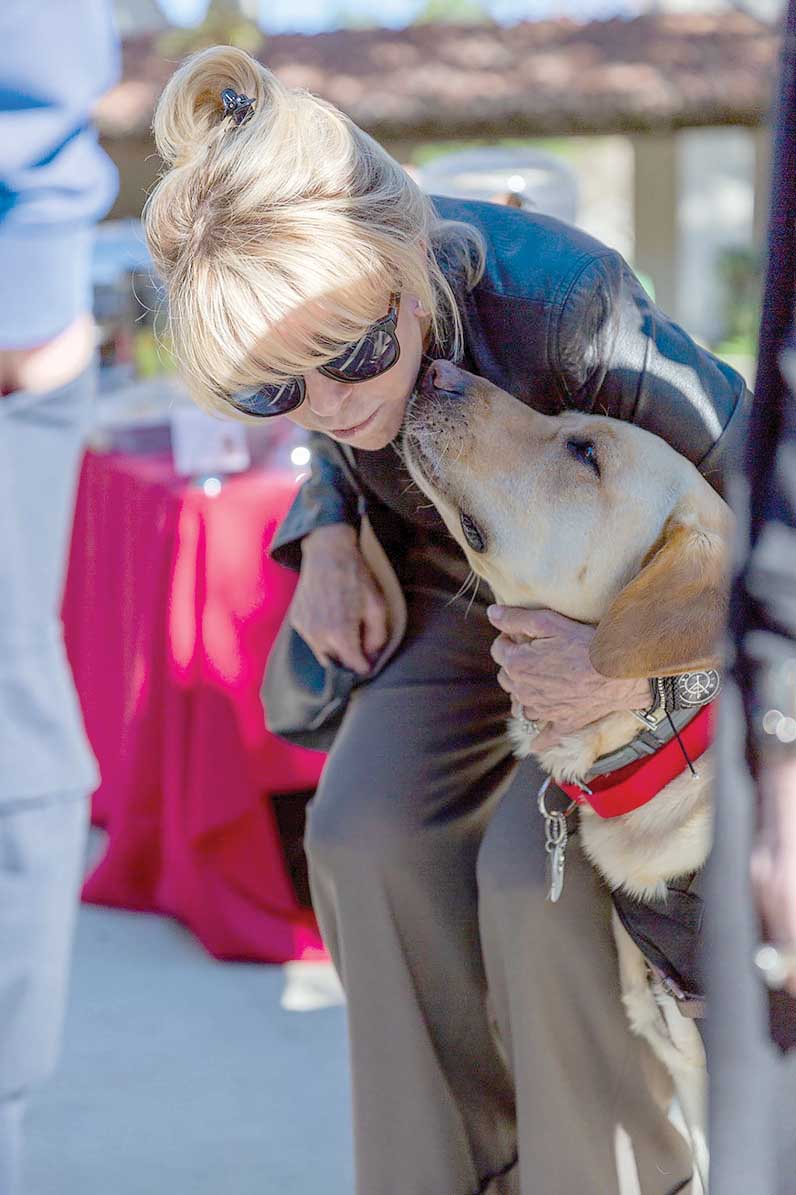By Kim Lamb Gregory

Peace has been elusive for students like Alyssa Connaughton and Madison Cummings, who were among the 48 CSUCI students at the Borderline Bar & Grill that November night when a shooter took the lives of 12 people.
But when a five-year-old yellow Labrador Retriever named Doc padded through a throng of students awaiting the candlelight vigil in front of the Broome Library, faces lit with smiles and dozens of hands reached out to stroke Doc’s coat.
“He was a good distraction,” said Connaughton, who reached out to pet Doc. “Dogs make everybody smile so it was great to have him there.”
Doc the campus therapy dog arrived on campus in October to help relieve students’ stress about things like studies or exams. But after the Borderline shooting and two fires that caused a campus evacuation, Doc’s responsibilities multiplied.
With soft brown eyes and an easy doggy smile, Doc was up to the task.
“Most of us have either grown up with dogs or been around dogs,” said Cummings, who grew up with two dogs. “Dogs can sense when you’re in trauma. You don’t have to say any words. You can just sit there and pet them.”

Doc is the first member of a campus therapy dog and veterans’ service dog program made possible through a generous gift from the Dr. Richard Grossman Community Foundation. The $220,000 donation will allow students to benefit from two campus therapy dogs and for five student veterans with post-traumatic stress to receive individual service dogs.
Doc is named for renowned reconstructive and plastic surgeon Dr. Richard Grossman, who established the Grossman Burn Center in Sherman Oaks.
Doc’s base of operations is at the University’s Veterans Resource Center located in the Bell Tower, where anywhere from 10 to 15 students a day stop by to see him or to play his favorite game.
“He loves tug toys,” said Assistant Director for Veterans Affairs Programs, Jay Derrico. “He’s available to any age and he likes being hugged by anybody who will hug him.”
Doc has already gained some faithful fans who visit him frequently, so one day Derrico pulled them together and created “Team Doc.”
“When I noticed the regulars coming in, I said ‘Let’s put up a Google calendar so people can sign up to walk him,” Derrico said. “One student grooms him and another does massages for animals.”
Doc goes home with a University staff member selected as Doc’s handler, Assistive Technology Specialist Jerry Garcia.
Plans are underway for the procurement and training of the next campus therapy dog and five service dogs for student veterans.
Return to the Table of Contents
© Fall 2018 / Volume 22 /Number 02 / Bi-annual
